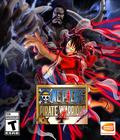Most gamers have run into at least one or two games that were deemed unworthy of further play. Among the titles that were deemed bad, some of them are bad enough that they actually become memorable or fun if the player were gracious enough to look past the faults. The Xbox 360 is no stranger to this concept, having already been exposed to at least two titles so bad they're considered good enough to have a cult following. Earth Defense Force 2017's PS2-like graphics and laughable voice acting didn't stop people from enjoying the classic co-op action in blasting away large insects and flying saucers. Despite even worse voice acting, graphics and poor animations, some enjoyed the strange and twisted storytelling provided by Deadly Premonition. The story in The First Templar is fairly interesting and the combat is decent, but the entire package falls apart.
The game's plot is unique in that few games are set during this specific time period. It is the late 13th century, and the Church is in disarray. The Order of the Knights Templar is losing members left and right due to foreign forces — and those in the order who have their own agendas. Templar Knight Celian decides that the only thing that will keep everything together would be finding the one artifact that has eluded them for so long: the Holy Grail. With the help of Marie, the daughter of one of the Templar Knights who last had knowledge of the artifact, he will stop at nothing to recover it one last time.
Despite what the box description says, The First Templar is more of an action game than an RPG. Your player is equipped with various attack types, and there's a combo system. Experience is gained after the conclusion of every fight or after the completion of any quest, but it is used as currency to buy more health orbs or learn more combos and defensive moves instead of for character advancement. You can find and assemble different pieces of armor and weapons, but they're merely cosmetic changes as opposed to actual combat benefits. Game progression is split up into levels instead of being one big, seamless experience, and you even find certain items that only last for as long as the level does. Aside from the experience, the only RPG-like mechanic is the presence of side-quests that pop up alongside your main quests in a given level.
With plenty of RPG aspects missing, it's the combat system that proves to be somewhat interesting. It's a bit free-flowing in that you never really lock on to an enemy. The game sort of gravitates you toward an enemy when you attack, almost letting you take care of large mobs by yourself without much trouble. Your defenses are limited to tumbling, but things open up when you're on the ground since you can actually roll around to avoid ground strikes. It's not exactly the deepest hand-to-hand combat system out there, but it is enjoyable on a basic level.
Aside from the technical gaffes (more on that later), the gameplay suffers from some faults of its own. Enemies often unleash moves that are both unblockable and, at times, unavoidable. For some reason, the reach detected by the game is larger than what the graphics display, getting you caught in the attack when you normally would be able to escape from one. The combat also gets problematic when you realize that your actions don't exactly cancel one another. Trying to execute a dodge after trying to execute a combo will still play out the combo animations first, letting you get hit in the process. Finally, executing some hits doesn't feel too satisfying since there are so few kill animations in place. There are only so many times you can stab a guy on the ground or bludgeon him with a shield before the process becomes pedestrian.
The First Templar is all co-op all of the time, even if you're playing solo. While you can certainly handle the game alone on its default difficulty level, the partner AI doesn't exactly make the proceedings any better. For the most part, your AI partner is pretty decent. He or she is proficient in a fight, and while your AI partner won't exactly do a good job of protecting you (or himself) from harm, he can deal out a good deal of punishment. He can even handle the trebuchet sections well, taking out his side of the field nicely, and can be stealthy and perform stealth kills without much instruction.
What does annoy, though, is his inability to go and heal himself when the opportunity arises. Unless you actually switch over to that character and force him or her to eat the food or take a drink of water, you'll watch him stare at the health pick-up when he has little to no health left. It becomes an annoyance, especially later in the game when enemy swarms grow larger and the constant switching of characters is too frantic to handle alone. What's interesting, though, is that it seems like the AI is better on the lower difficulty level. On casual, your AI partner tries to heal him or herself and does a better job at defense, while a difficulty increase makes your partner more susceptible to being hit more often. It's an interesting trend but one that leads to more frustration should one decide to play at higher difficulties.
Multiplayer is a strictly co-op affair and is done decently. Offline play splits the screen right down the middle but shrinks the playable area horizontally, leaving one-fifth of the screen dedicated to the separate energy meters. It's an odd decision, but the game isn't any less playable because of it. The details and frame rate also hold steady here, so there's no performance detriment. The game also lets you play your whole campaign online if you wish, and it's on a toggle, so you can turn it off and on at your leisure. Unfortunately, the lack of players online didn't afford us a chance to check out online performance. Again, the game doesn't suffer too much when played solo, but if you're looking for some co-op, you'll have to depend on either offline play or hope someone you know picks it up for online co-op.
The game shows off a few flashes of decency in a myriad of laughable graphics. The environments don't look too bad early on. It still falls in line with the brown and gray color scheme most of the notable games seem to employ during this gaming generation. From there, though, things start to go downhill. The character models don't look too bad because of the inclusion of some nice details, like realistic-looking cloth, but their heads are pretty bad. The hair on each character looks like a lifeless cap, and the faces on all of the secondary characters look hideous. The blank stares in their eyes and their propensity to show their teeth further emphasizes their ghoulish appearances. The animations are rarely smooth; in combat, you'll often see people slide, and you'll always see the same characters practice the same moves during cut scenes, like the fist punch in the hand or an open-hand presentation when such animations aren't necessary. The camera, while not automatic, is low enough at its default level that it often gets objects in the way of combat and sometimes doesn't follow the character during cut scenes. All of this plays out at a fairly stable frame rate.
The sound is rather weak. The music is sparse, with the same pieces repeating in several different levels. Because each piece is short and seems to play at inopportune times, the repetition is noticeable. Most of the time the game is quiet, especially during fights, with the music either starting in the middle of the fight or once the fight is over. The voice acting is laughable at best. The delivery is wooden, and because certain lines are tied in to certain checkpoints, it makes for some confusing situations. For example, you can complete a side-quest to save a villager. That villager will then tell you exactly how to get to a citadel for your next quest. On your way to the citadel, your partner states that the traveled road is the correct one, leading you to question whether or not he is right. It makes for an unintentionally laughable scenario. Both the voices and effects suffer from some technical flaws, including balancing. There are times when an on-screen character has his voice projected from the rear for one line and then on the front for another. There are also times when sword hits do the same, playing in just about any direction even though it should all be coming from the front. It makes for a scattered experience on surround sound systems and lots of volume fluctuation if you're running this through basic stereo speakers.
All in all, The First Templar has some redeeming qualities. The combat system, while not very deep, is engaging enough except for a few issues, and the setting is intriguing. Despite the odd method used for split-screen, the co-op play is welcome, as is online co-op if you could find a companion. Its technical aspects don't do it any favors, though, as it has some laughable animations, poor graphics and subpar sound. It's a rental, but it's worth trying out despite the flaws if you happen to find it at a reduced price.
Score: 5.8/10
More articles about The First Templar










 The First Templar follows the story of two characters - a French Templar, and his companion, a noble lady who has been proclaimed a heretic. Taking control over these two unlikely allies, the player must uncover the mysteries behind the Templar Order, play a role in a grand conspiracy, and discover the secret of the Holy Grail.
The First Templar follows the story of two characters - a French Templar, and his companion, a noble lady who has been proclaimed a heretic. Taking control over these two unlikely allies, the player must uncover the mysteries behind the Templar Order, play a role in a grand conspiracy, and discover the secret of the Holy Grail. 

























